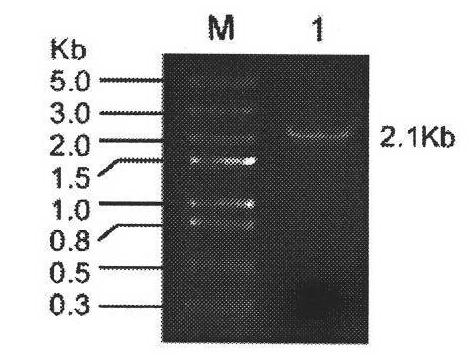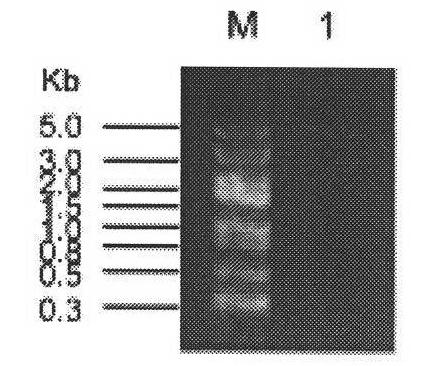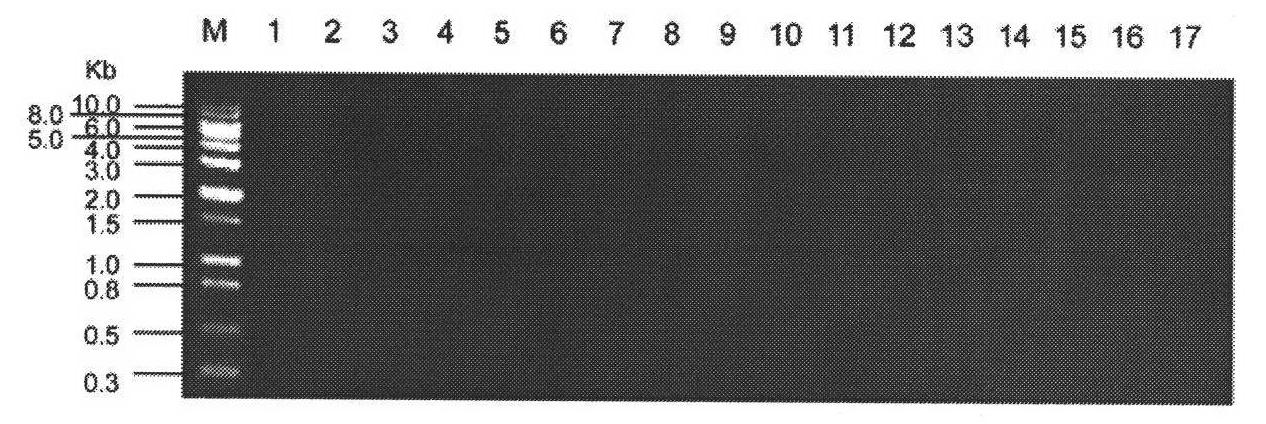Potassium-ammonium double-function transport molecule of rice and application thereof
A dual-function, rice technology, applied in the field of plant genetic engineering, can solve the problems of limited soil nutrients, difficult utilization of effective nutrients, water eutrophication and water environment damage.
- Summary
- Abstract
- Description
- Claims
- Application Information
AI Technical Summary
Problems solved by technology
Method used
Image
Examples
Embodiment 1
[0034] Embodiment 1: Cloning of rice OsKAT3 gene
[0035] Extract total RNA from rice roots and leaves grown in hydroponic culture for 10 days, use it as a template, and use Oligo dT as a primer for reverse transcription. After the reaction is completed, take 1 μL of the reverse transcription product as a template, and perform PCR amplification with specific primers K3F and K3R . As a result, a single product of about 2.1 kb ( Figure 1A ). After the amplified band was purified and recovered, the recombinant plasmid pTK3 connected with the pEASY-T1 vector was transformed into Escherichia coli competent cell DH5α. Single clone plasmids were picked for enzyme digestion detection ( Figure 1B ) and colony PCR identification ( Figure 1C ), positive clones were selected and sequenced.
[0036] K3F: 5′-ATGACCCAAGCTCACTCAAAATCTTGCTTCC-3′
[0037] K3R: 5′-CTACATCTCAAGAAGGAATAGATGGTCGCCA-3′
[0038] The cDNA sequence of OsKAT3 and the amino acid sequence of its encoded protein a...
Embodiment 2
[0104] Example 2: Construction and functional complementation of eukaryotic expression vector of rice OsKAT3 gene
[0105] 1. Construction of rice OsKAT3 gene expression plasmid
[0106] The rice OsKAT3 was constructed into the pYES2 vector (the vector was purchased from Invitrogen), and after transforming into Escherichia coli, the plasmid was extracted and detected ( Figure 3A ).
[0107] 2. Functional complementation experiment of recombinant plasmid pYES2-OsKAT3
[0108] The constructed pYES2-OsKAT3 vector was transformed into yeast CY162 strain, grown for 1-2 days under 10mM SD solid medium, and yeast clones were picked for detection ( Figure 3B ), cultivated for about 1 day under 10mM SD liquid medium, and then transferred to 0.1mM YNB+Gal solid medium for growth, and verified that the rice OsKAT3 gene had the activity of transporting potassium inward by observing the growth situation ( Figure 4 ).
Embodiment 3
[0109] Example 3: Electrophysiological function analysis of rice OsKAT3 gene
[0110] The rice OsKAT3 gene was constructed into the pGEMHE vector (the vector was first transformed by introducing the 3'-UTR and 5'UTR of a β-globin gene of Xenopus laevis into the pGEM-3Z vector by Liman et al. of Harvard Medical School. The vector diagram is as follows Figure 8 ), detection after transformation of Escherichia coli (such as Figure 3A ), using specific primers M13 and M13R for PCR amplification, and the product was made into Capping RNA, which was injected into Xenopus oocytes by microinjection technology for expression for about 2 days, and then OsKAT3 was expressed by TEVC (Two-electrode voltage-clamp) technology Gene for electrophysiological analysis.
[0111] 1. Potassium transport function analysis of rice OsKAT1 gene
[0112] 1) Preparation of bath liquid:
[0113] Potassium ion bath: 100mM potassium glutamate, 2mM MgCl 2 , 1mM CaCl 2 , 10mM Hepes;
[0114] Mannitol ...
PUM
 Login to View More
Login to View More Abstract
Description
Claims
Application Information
 Login to View More
Login to View More - R&D
- Intellectual Property
- Life Sciences
- Materials
- Tech Scout
- Unparalleled Data Quality
- Higher Quality Content
- 60% Fewer Hallucinations
Browse by: Latest US Patents, China's latest patents, Technical Efficacy Thesaurus, Application Domain, Technology Topic, Popular Technical Reports.
© 2025 PatSnap. All rights reserved.Legal|Privacy policy|Modern Slavery Act Transparency Statement|Sitemap|About US| Contact US: help@patsnap.com



